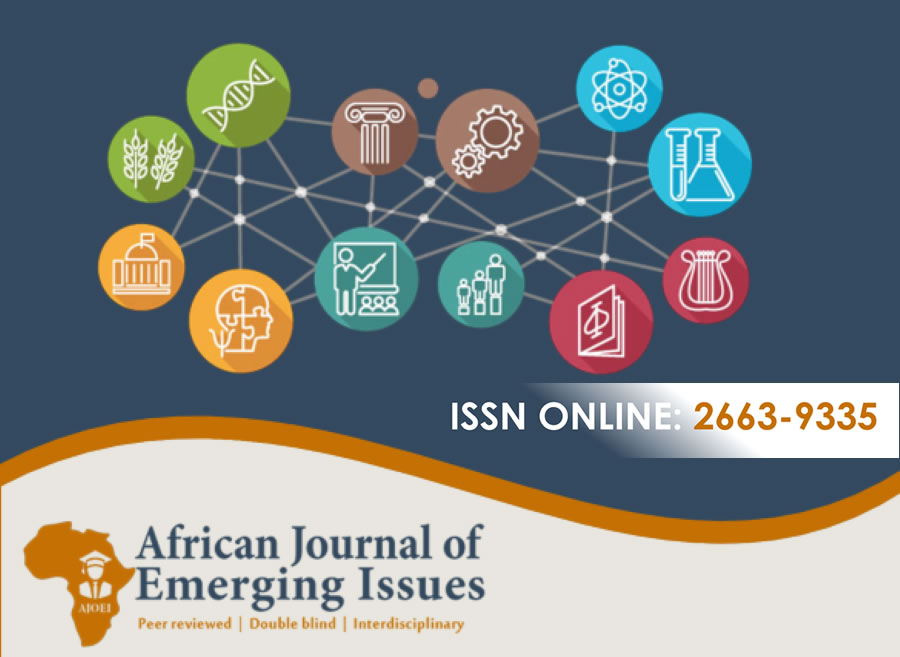RELEVANCE OF LEADERSHIP STYLES ON INSTITUTIONAL PERFORMANCE. A CASE STUDY OF GARISSA UNIVERSITY, GARISSA COUNTY, KENYA
Abstract
Purpose of the Study: To examine the relevance of leadership styles on institutional performance in government institutions of higher learning, with a focus on autocratic leadership style, bureaucratic leadership style, and democratic leadership style.
Methodology: The study used a mixed-methods approach, with a survey instrument and questionnaire used to sample a total of 80 respondents representing 87% of the total staff population at Garissa University College.
Findings: The study found that Garissa University College majorly uses democratic leadership style in its operations, and that this leadership style has had an appreciable influence on the operations and performance of the institution. The study also found that there is a strong relationship between leadership style and institutional performance.
Conclusion: The study recommends that the management of the institution apply more of the democratic leadership style, which has been shown to be effective in promoting institutional performance. The study also suggests that the management could mix the democratic leadership style with other leadership styles where necessary, depending on the specific situation.
Keywords: Relevance of Leadership Styles, Institutional Performance, Garissa University, Garissa County, Kenya
References
Bass, B., & Avolio , J. (1997). Full Range Leadership Development: Manual for Multifactor Questionnaire.
Burch, R. (2009). The Socal Science of Leisure: Competing explanations. Journal of Leisure Research.
Callahan, T. (2015). Ledaers Behavior Durign Radical Chnage Process. International Journal of Business Communication.
Carlyle, T. (1887). Great Man Theory of Leadership Expained. Cornell University Library.
Cuban, L. (1988). The Managerial Imperative and the Practice of Leadership in Schools. Open Journal of Social Sciences.
D, T., & L, C. (1995). Tinkering toward Utopia: A Century of Public Schools Reform. Creative Education.
Dobbins, G. (2008). Differences in Leadership Styles. Academy of Management Review.
Galston, W. (2018). The Populist Challenge to Liberal Democracy. Journal of Democracy.
Germano, M. (2010). Leadership Styles and Organizational Impact. Library Worklife Journal, 50-62.
Jeremy .M, Melinde .C & Ciller V. (2012). Perceived leadership style and employee participation in a manufacturing company in the democratic republic of Congo, African journal of business management, .6(15), 5389-5398.
Khan, S., Asghar, M., & Zaheer, A. (2014). Influence of Leadership Style on Employee Job Satisfaction and Firm Financial Performance: A Study of Banking Sector in Islamabad Pakistan. Actual Problems in Economics, 155, 374-384.
Landis, E., & Harvey, M. (2014). A Synthesis of Leadership Theories and Styles. Journal of Management Policy & Practice, 15(2), 97-100.
Matei, A. & Ciprian D. (2015) “Corporate Governance and Public Sector Entities.” Procedia
Economics and Finance.
McGregor, D. (2003). The human side of enterprise. New York: McGraw-Hill
Michael, A. (2010). Leadership Style and Organizational Impact.
Mittal, R. (2015) “Charismatic and Transformational Leadership Styles: A Cross-Cultural
Perspective.” International Journal of Business and Management, 10, 26-33.
Ngambi H. C. (2011). Rare total leadership: Leading with the heart and hands. Juta, Cape Town.
Obiwuru. T, Okwu. A, Akpa. V &Nwankere. I (2011). Effects of leadership style on organiszational performance: A survey of selected small-scale enterprises in Ikosi – Ketu Council development area of Lagos State, Nigeria. Australian journal of business and management research 1(7).
Ryan, J. &Tipu, S. (2013). Leadership effects on innovation propensity: A two-factor full range leadership model, Journal of Business Research, 66, 2116 – 2129.
Sparks, G. (2015) “Destructive Leadership: The Hatfield and McCoy Feud.” American
Journal of Business Education, 8, 307-326.
Thornton, K. (2017). Effective Ledaership Practices Leading to Distributed Leadership. Journal of Educational Leadership, Policy and Practice, 32, 33-45.
Trujillo, G., & Tanner, K. (2014). Consideraing the Role of Affect in Learnign: Monitoring Students' Self-Efficacy, Sense of Belongign, and Science Identity. Life Sciences Education.
Van Vugt, M., Jepson, S. F., Hart, C. M., & De Cremer, D. (2004). Autocratic leadership in social dilemmas: A threat to group stability. Journal of experimental social psychology, 40(1), 1-13.
Khan, M. S., Khan, I., Qureshi, Q. A., Ismail, H. M., Rauf, H., Latif, A., & Tahir, M. (2015). The styles of leadership: A critical review. Public Policy and Administration Research, 5(3), 87-92.
Devi, A. D., &Subiyantoro, S. (2021). Implementation of Democratic Leadership Style and Transformational Head of Madrasah in Improving the Quality. Nidhomul Haq: JurnalManajemen Pendidikan Islam, 6(1), 14-26.
Iqbal, N., Anwar, S., & Haider, N. (2015). Effect of leadership style on employee performance. Arabian Journal of Business and Management Review, 5(5), 1-6.
Bennis, W. G. (2017). Post bureaucratic leadership. In American Bureaucracy 3(2)165-187). Routledge.
Al Khajeh, E. H. (2018). Impact of leadership styles on organizational performance. Journal of Human Resources Management Research, 2018, 1-10.
Ojokuku, R. M., Odetayo, T. A., &Sajuyigbe, A. S. (2012). Impact of leadership style on organizational performance: a case study of Nigerian banks. American journal of business and management, 1(4), 202-207.
Islam, K. (2010). Good governance and bureaucratic leadership: Can ‘builders and titans’ approach be applicable in public agency leadership? A case of bureaucracy in Bangladesh. Studies on Asia, 4(1), 132-156.
Arshad, U., Ullah, O., & Malik, U. (2021). Bureaucratic leadership style and teachers’ professionalism: A case study of public sector universities. Global Regional Review, 4(6) 211-222.
Gultom, A., & Situmorang, B. (2020). Effect of Democratic Leadership Style and Bureaucratic Leadership Style against Teacher Work Motivation in Dolok Batu Naggar State 1 State School. In Unimed International Conference on Economics Education and Social Science Individual, (Unicees) 2(4)306-313.





